MACRO THROUGH THE WINTER
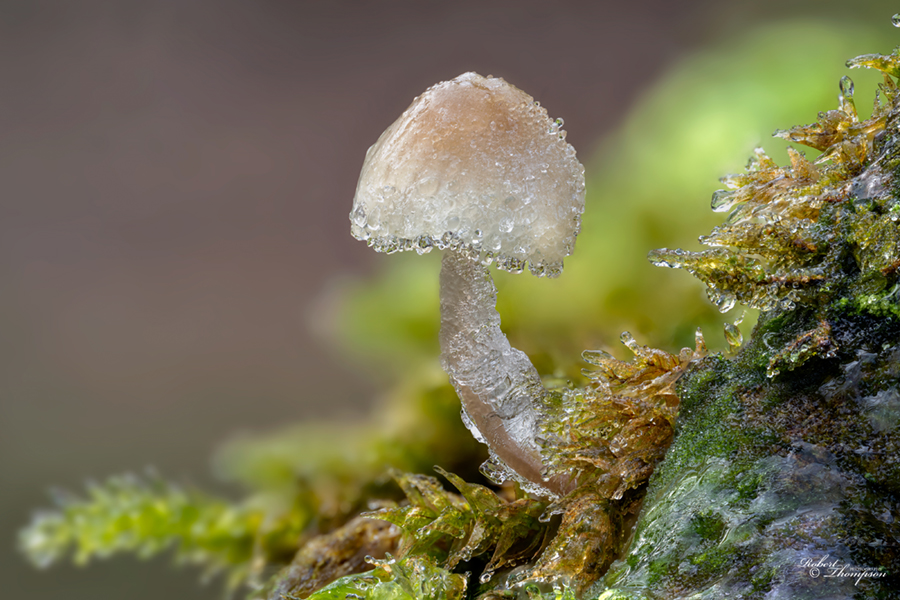
Tiny frosted Mycena species
Heading out early when there has been an overnight frost presents good opportunities to photograph subjects
with frozen water droplets as in this case. The Mycena species was around 1cm tall.
Focus stacked using the Novoflex Castel-M and the Laowa 85mm 2X Ultra Macro lens.
Winter is often seen as the quiet time in the macro calendar. Many photographers enter what is often termed as periodic dormancy at this time, bringing out their cameras again only when spring is on the horizon. However, having said that prolonged inactivity often means having to revisit some of the techniques that were acquired and perfected throughout the previous seasons; this is why you should keep going through the winter as there are still many things to photograph.
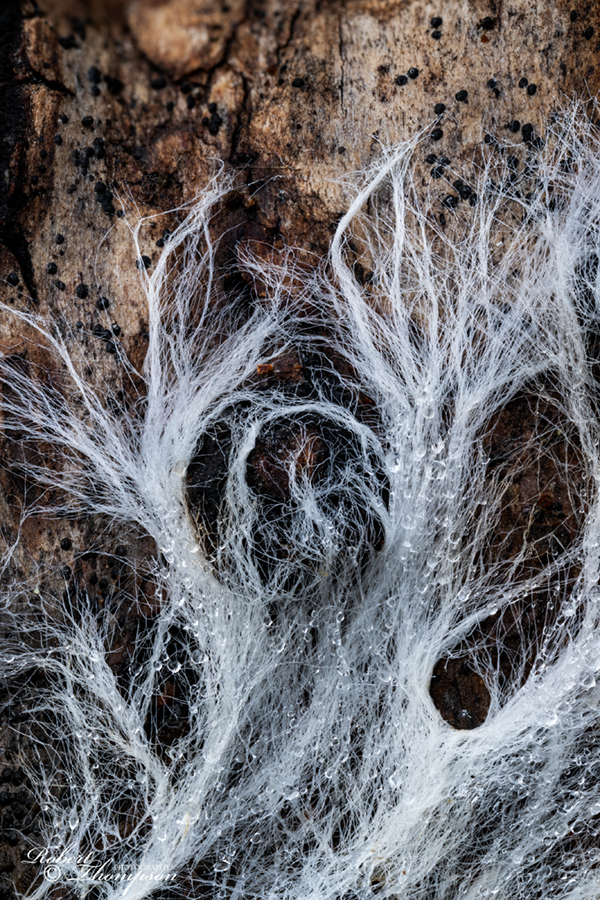
Fungal Mycelium network fibres
Turning over decaying branches and logs often reveals these tiny thread-like mycelium fibres. The mycelium still has
dew droplets from the night before. Photographed at 2.5X using the Castel-M and the Laowa 2.5-5X Ultra Macro.
It’s important to keep your interest up throughout the year. It helps to maintain your skill level and keeps you active in the field. Macro photography can be practised all year round with many different subjects becoming available as the seasons change. I often like the winter months as I have a little more freedom to pursue my own agenda. For those who are prepared to go out and endure the cooler days, there are still many things in the woodlands to see and keep you motivated. Many small fungi are still about and slime moulds are often frequently encountered at this time of the year. Frost and snow add another dimension to subjects providing you with opportunities to capture images that are distinctly different from any other seasons. These are just a few examples of typical subjects which are commonly seen during the winter months.
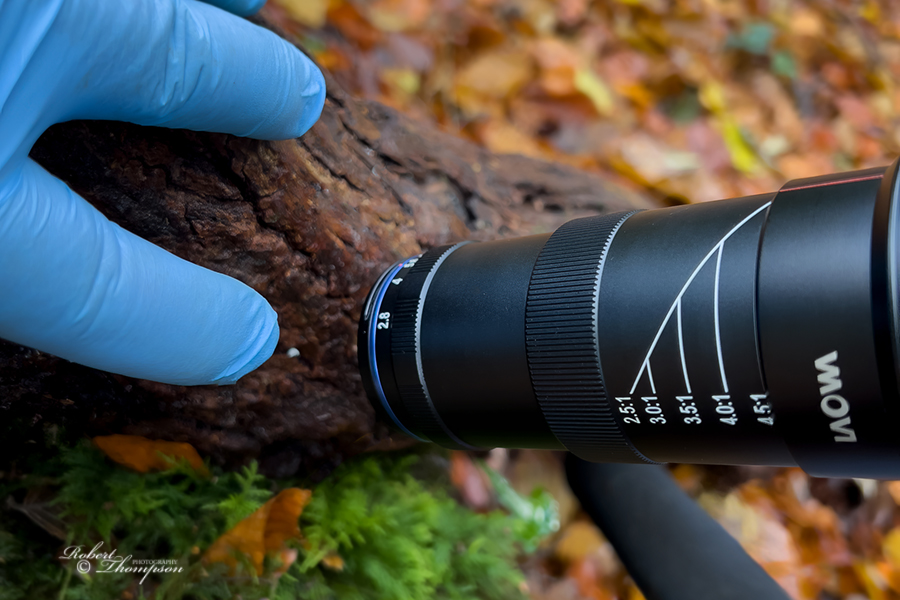 Laowa with Novoflex Castel-M
Laowa with Novoflex Castel-M
Examining fallen logs and branches carefully with a hand lens will often show subjects that are virtually impossible to see with your eyes.
The tiny fungus shown here was only a few millimetres in size, but as you can see from the camera setup and my index finger
just how tiny this little Mycena was. I could not detect the dew droplets until I had it set up on camera. Photographed at
4.5X using the Novoflex Castel-M and the Laowa 2.5-5X Ultra Macro. One of my favourite combinations in the field.
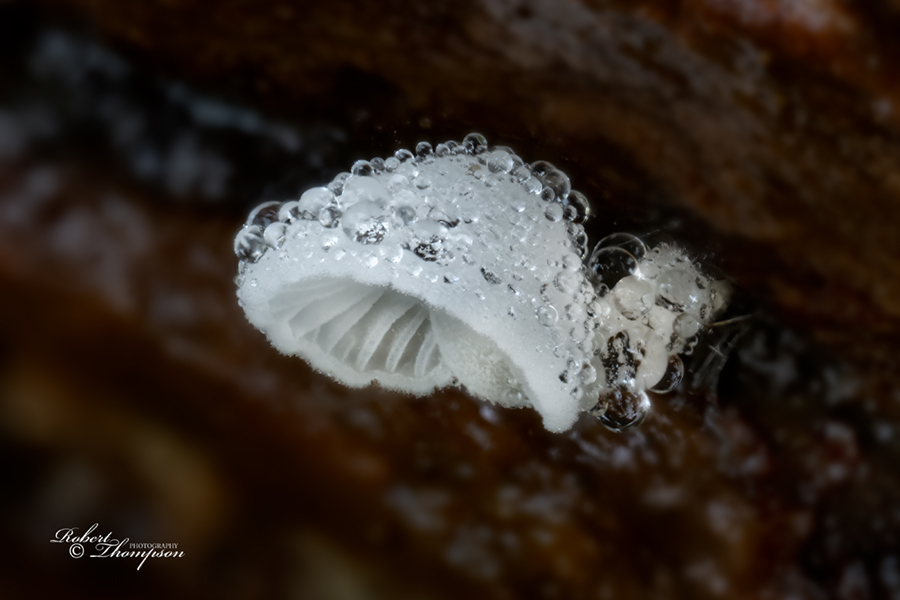
Dewdrop Bonnet Hemimycena tortuosa
The finished composite image of this tiny fungi shows the water droplets clearly which were not visible to the eye when viewing.
Thanks to companies such as Novoflex and Laowa working at higher magnifications in the field has become more straightforward
than in the past. Many of the images seen today would have been extremely difficult to achieve in the field.
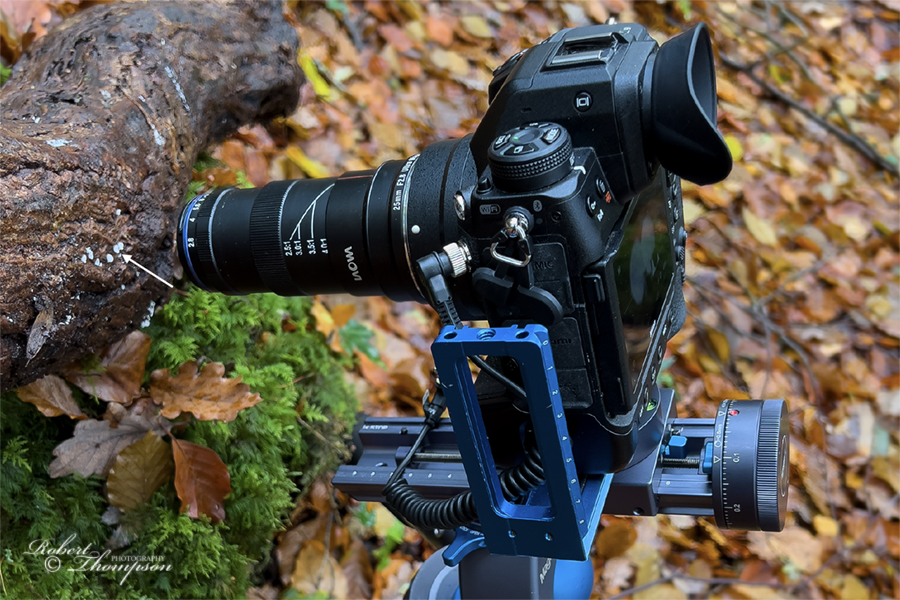
Dewdrop fungi setup
Photographic setup for these two tiny Dewdrop fungi.
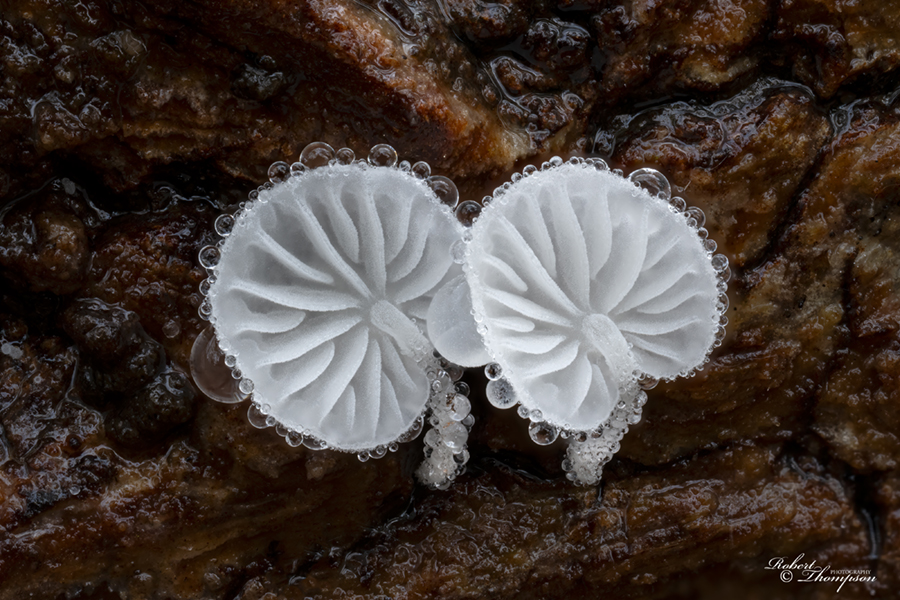
Dewdrop Bonnet Hemimycena tortuosa
These tiny fungi were on the underside of fallen oak branch. Photographed with the Laowa 2.5-5X Ultra Macro,
Novoflex Castel-M. Magnification 4X.
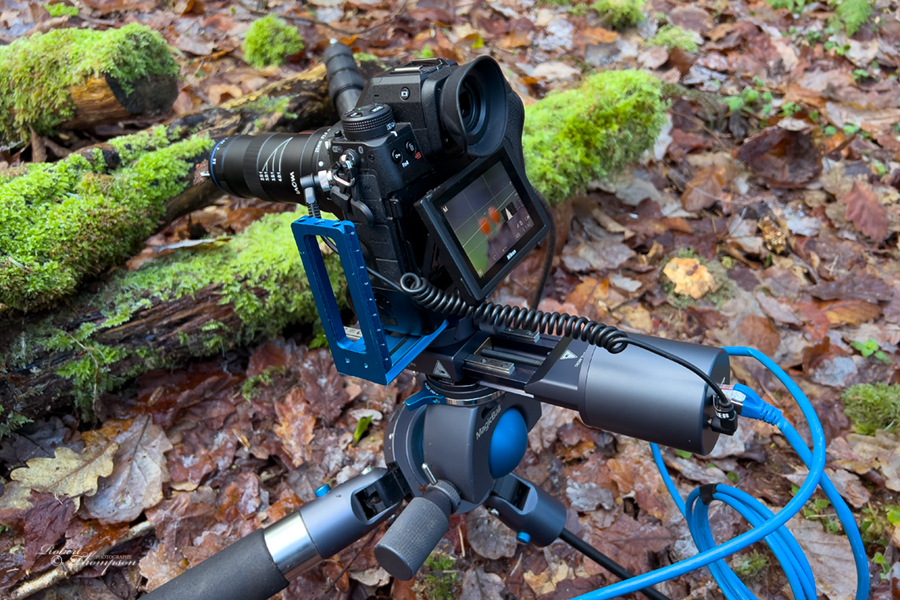
Slime Mould and Castel-Micro
The camera setup used to photograph this pair of tiny slime moulds which were about 2mm in height. The Castel-M and the electronic Castel-Micro
deliver the same results up to a magnification of 5X.
I carry the Castel-M with me in my photographic backpack. Its small size takes up very little room and I always have the capability to shoot at higher magnifications if the need arises.
I also use the Castel-Micro on some occasions in the field when I am targeting certain species and when weight is not an issue. I also use the Novofex modular tripod system.
You can see from the images that I have removed two legs and replaced them with mini legs to make it easier to position the camera and tripod.
Composite image focus stacked using the Laowa 2.5-5X Ultra Macro Lens.
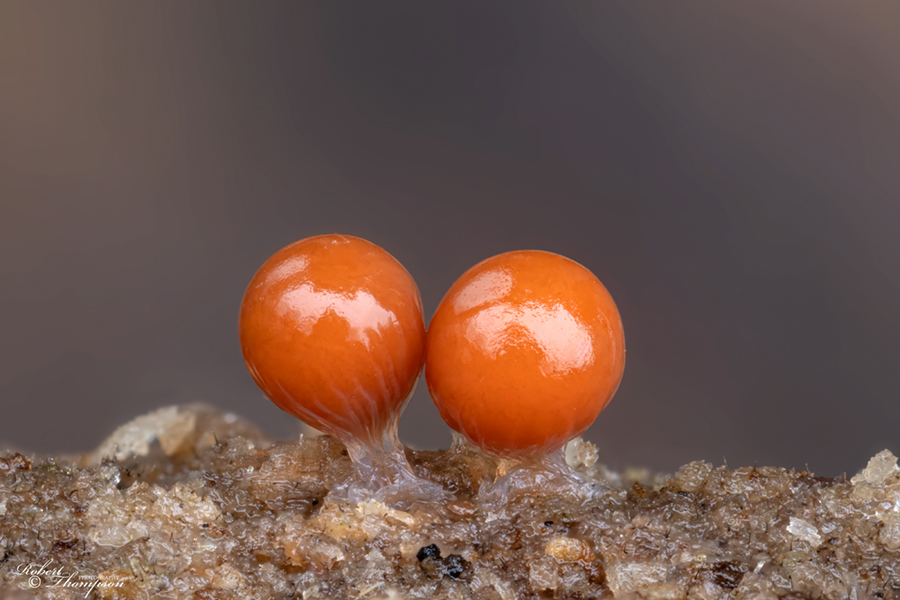
The early colour phase of H. decipiens before it undergoes a colour change illustrated below.
Focus stacked using the Castel-Micro and the Laowa 2.5-5X macro. Supported on the Novoflex MagicBall and the PRO75.
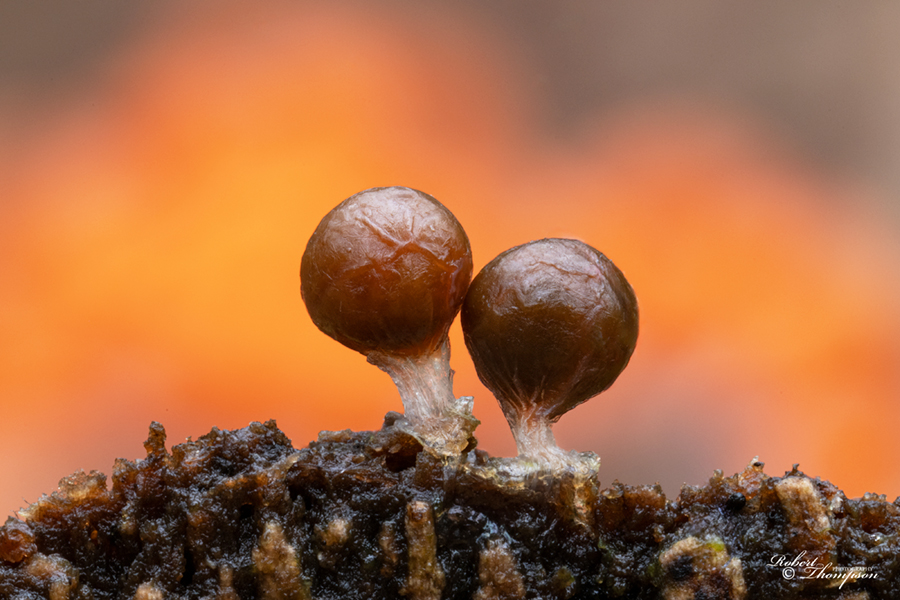
Slime Mould Hemitrichia decipiens
These pair of tiny slime moulds were nearly 2mm high. They started off bright orange and after a day went through a colour change.
Slime moulds are fascinating subjects for macro photography and are extremely popular among the macro fraternity.
Photographed with the Castel-Micro and the Laowa 2.5-5X Ultra Macro lens.

Common Woodlice Oniscus asellus
Woodlice are a common site all year round in woodlands. Turning over logs and decaying branches often reveals them hiding in crevices and clefts in the wood.
Moulting takes place in two stages first the back half and then a couple of days later the front section as depicted in the photograph.
Photographed with the Novoflex Castel-M, the PRO 75 and Magicball.
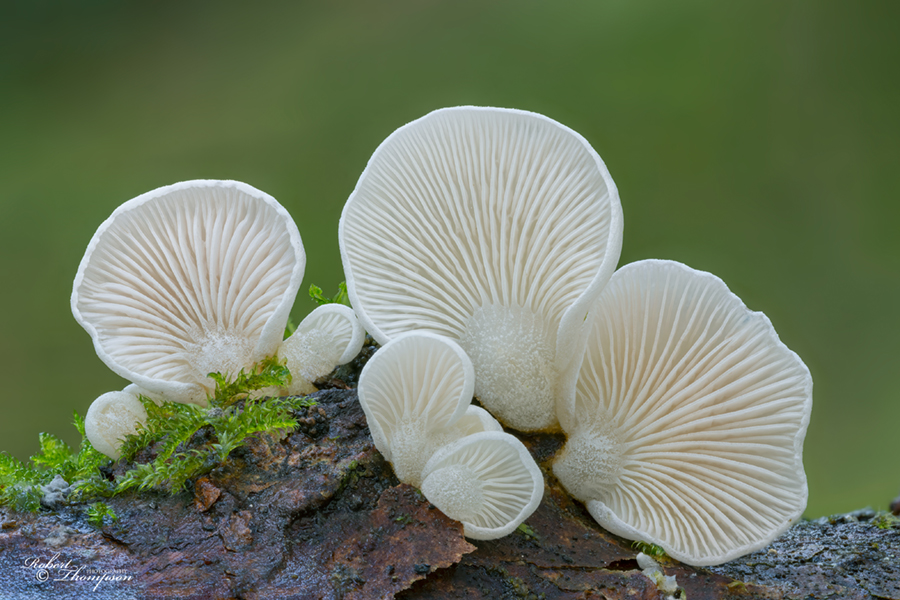
Elastic Oysterling Panellus mitis
One of my favourite fungi which I frequently find in late autumn and through most of the winter. There are many different species and identification
can not always be confirmed with photographs. Many species are tiny as in this case with these individuals populating a small twig.
Composite image focus stacked using the Novoflex Castel-M and the Laowa 90mm Ultra macro.

Slime Mold Fuligo septica
A very conspicuous slime mould easily spotted in its early stage of development. I found this specimen in conifer woodland growing on a small branch.
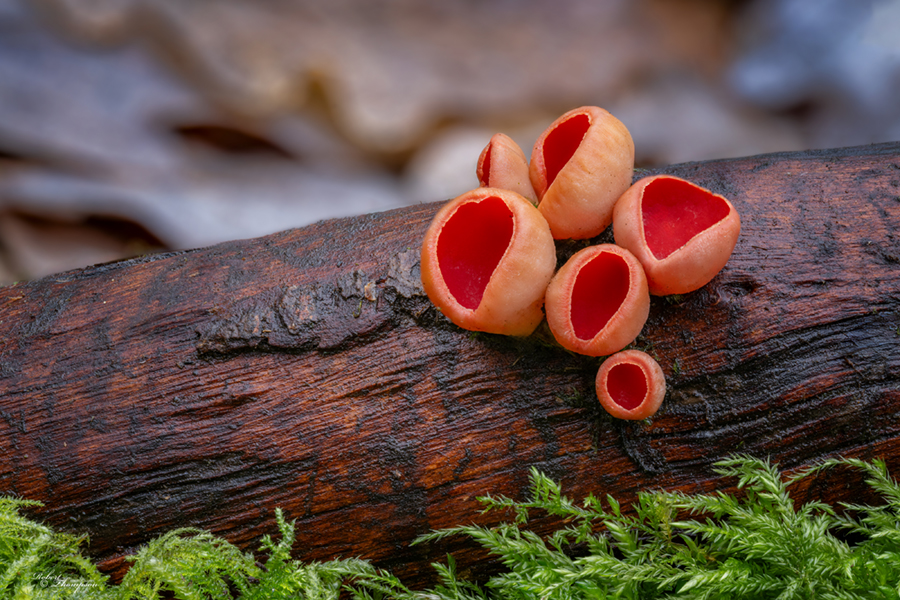
Scarlet Elfcup Fungus Sarcoscypha austriaca
January and February are the best months to see and photograph this colourful Ascomycete.
Many individuals often populate fallen logs and branches adding colour and contrast between the moss and wood.
Photographed with the Laowa 90mm Ultra Macro, the Novoflex PRO 75 and Magicball.

Collared Parachute Mushroom Marasmius rotula
This small attractive fungi is frequently seen in late autumn and early winter. I found this small trio on a partially decaying twig.
Nikon Z 105 mm macro and the Novoflex PRO 75 and Magicball head.

Unidentified tiny Mycena species
An early morning start when there is frost often adds an extra dimension to subjects with frozen water droplets.
There were several of these tiny Mycena growing on an overhanging branch. Laowa 90mm Ultra Macro,
Novoflex Castel-M, PRO 75 and Magicball.
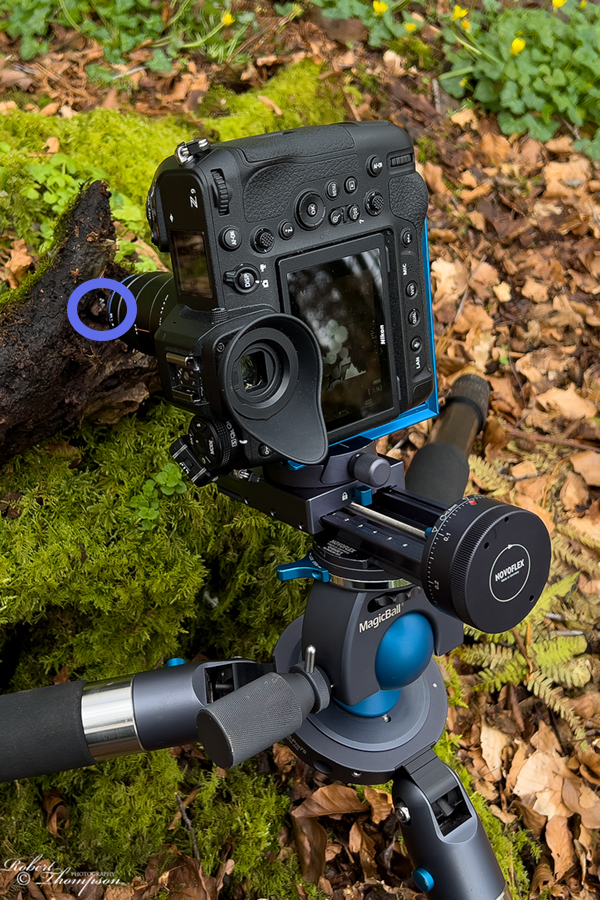
Castel-M & Laowa Lens
The Castel-M in combination with the Laowa 2.5-5X Ultra Macro was used to capture this tiny group of disco fungi only a few millimetres in size.
Supported on the Novoflex PRO 75 and Magicball.
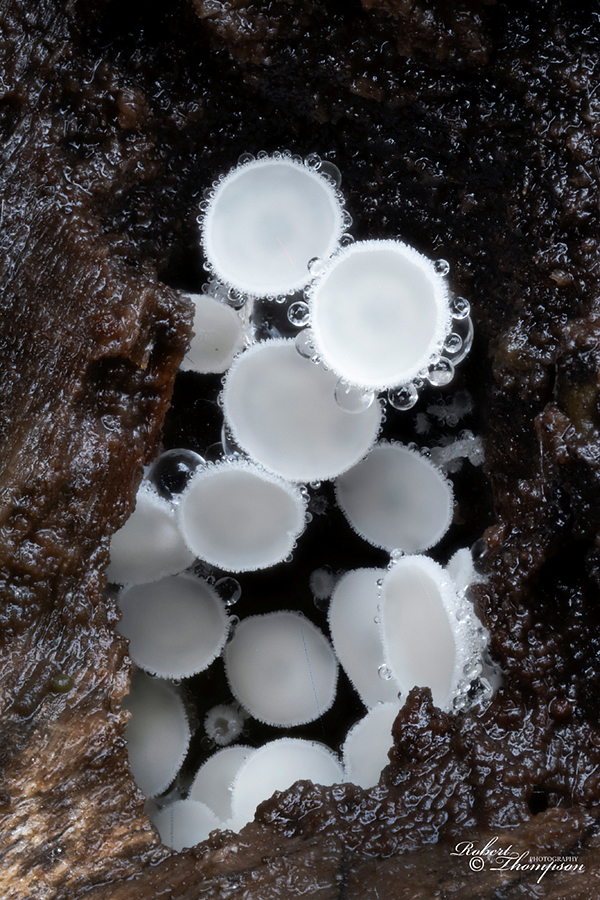
Snowy Disco Lachnum virgineum
The completed composite image photographed at 3.5X.

